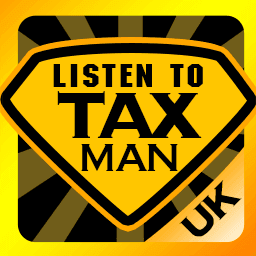Personal PAYE Allowances
| Allowance | 2017/18 | 2018/19 | 2019/20 | Change |
|---|---|---|---|---|
| Basic | £11,500 | £11,850 | £12,500 | + £650 |
| People born between 6th April 1938 - 5th April 1948 | £11,500 | £11,850 | £12,500 | + £650 |
| People born before 6th April 1938 | £11,500 | £11,850 | £12,500 | + £650 |
| Married Couples Allowance ( if born before 6th April 1935) | £8,445 | £8,695 | £8,915 | + £220 |
| Blind Person's Allowance | £2,320 | £2,390 | £2,450 | + £60 |
| Marriage Allowance* | £1,150 | £1,190 | £1,250 | + £60 |
From 2016-17 onward, all individuals will be entitled to the same personal allowance, regardless of the individuals’ date of birth. This allowance is subject to the £100,000 income limit which applies regardless of the individual’s date of birth. The individual’s personal allowance is reduced where their income is above this limit. The allowance is reduced by £1 for every £2 above the limit
The Age Related Income Limit for 2017/18 is £28,900. if you are over 65 years and your earnings are above £28,900 - your Personal Allowance will be reduced by £1 for every £2 you earn over that £28,900 limit.
Tax Brackets
| Tax Rate | 2017/18 | 2018/19 | 2019/20 | Change |
|---|---|---|---|---|
| Basic rate 20% | TFA - £33,500 | TFA - £34,500 | TFA - £37,500 | widened by £3,000 |
| Higher Rate 40% | £33,501 - £150,000 | £34,501 - £150,000 | £37,501 - £150,000 | cut by £3,000 |
| Additional Rate 45% | £150,001+ | £150,001+ | no change | |
| NOTES: TFA: Tax Free Allowance amount - you only start paying the basic rate of tax once your earnings go above your tax free allowance. These rates are applied after your tax free allowance has been deducted from your gross wage. |
||||
The widening of the Basic Rate tax bracket and the increase in the Basic Personal Allowance means you can earn more this coming tax year before crossing into the 40% tax bracket. If you take the new Basic Tax Rate threshold of £37,500 and add it it the new Basic Personal Allowance of £12,500, we see that for 2019/20 you can earn £50,000 before you cross into the 40% tax rate.
Change in take home pay after tax and NI
| Gross Wage | Net Pay 2017/18 | Net Pay 2018/19 | Net Pay 2019/20 | Difference |
|---|---|---|---|---|
| £10,000 | £9,780 | £9,811 | + | |
| £20,000 | £16,880 | £16,983 | + | |
| £30,000 | £23,680 | £23,783 | + | |
| £40,000 | £30,480 | £30,583 | + | |
| £50,000 | £36,776 | £37,019 | + | |
| £75,000 | £51,276 | £51,519 | + | |
| £100,000 | £65,776 | £66,019 | + | |
| £125,000 | £75,676 | £75,776 | + | |
| £150,000 | £90,176 | £90,276 | + | |
|
Source listentotaxman.com® |
||||
National Insurance
There have been no changes to the percentage of National Insurance Class 1 contributions, they remain at 12% for employees, and 2% above the upper earnings limit. Employers Class 1 have remained the same at 13.8%. The limits and thresholds have changed, as illustrated in the table below.
National Insurance Bands
| Description | 2017/18 | 2018/19 | 2019/20 | Change |
|---|---|---|---|---|
| Weekly Lower earnings limit, primary Class 1 | £113 | £116 | £118 | + 2 |
| Weekly Upper earnings limit, primary Class 1 | £866 | £892 | £962 | + 70 |
| Weekly Primary threshold | £157 | £162 | £166 | + 4 |
| Weekly Secondary threshold | £157 | £162 | £166 | + 4 |
| Weekly Upper Secondary Threshold for U21s | £866 | £892 | £962 | + 70 |
| Apprentice Upper Secondary Threshold for U25s | £866 | £892 | £962 | + 70 |

 Our Favourite Tax App?
Our Favourite Tax App?
It's Simple
ListenToTaxman has teamed up with GoSimpleTax, online Self Assessment software to bring you, what in our view, is the easiest way of calculating and submitting your tax return we’ve seen so far.
Key in your income and expenses into the software, and it will flag up any unclaimed allowances. Simple. Once you’re comfortable with the information you’ve entered, simply submit via the software to HMRC. You’ll just need your Unique Tax Reference Number (UTR) found on most tax correspondence. GoSimpleTax software is free to try. If you don’t think it’s right for you - don’t pay anything. If you do choose to submit your tax information via the software, then you will pay £54.99 for an individual return – multiple returns and Parnerships are available too!
Personal Tax


